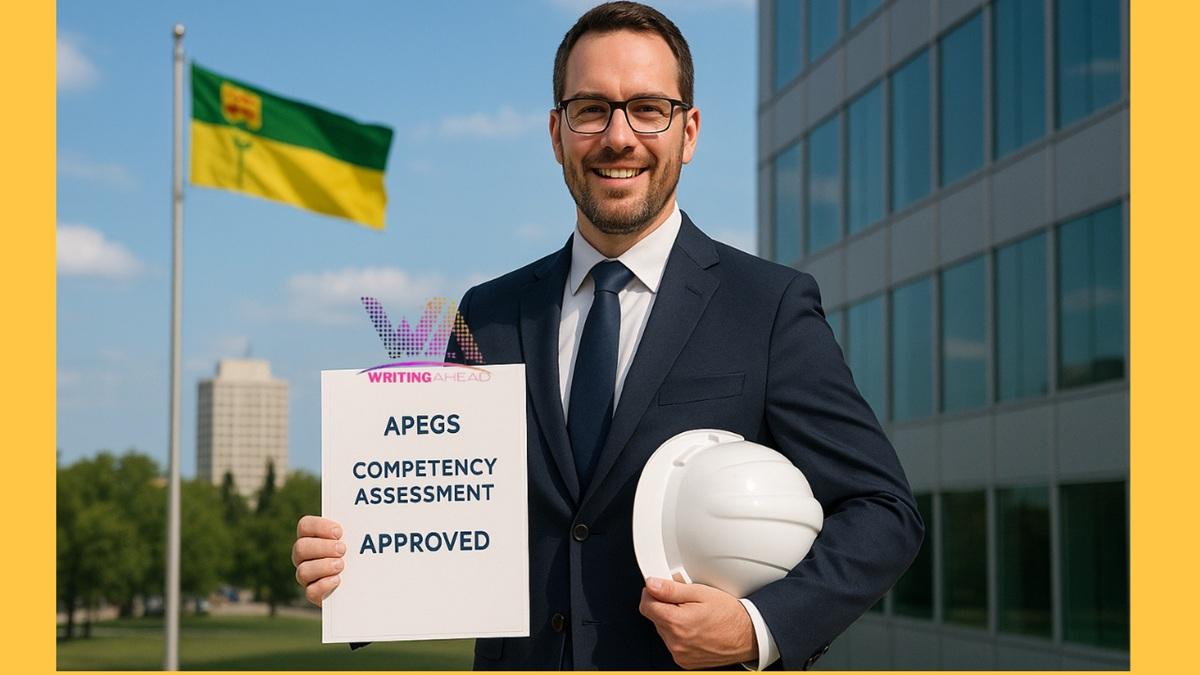How to Prepare APEGS Competency Based Assessment

Personal, simple guide to help you understand and succeed
Wondering what it takes to get licensed as an engineer in Saskatchewan?
When I first looked into it, I kept seeing the term APEGS CBA everywhere. At first, it sounded formal and complicated, but I soon realised it stands for Competency-Based Assessment—a practical way to prove to the Association of Professional Engineers and Geoscientists of Saskatchewan (APEGS) that you’re ready for professional recognition.
If you’re about to start or thinking about it, here’s what I’ve learned about how the apegs competency assessment works, why it matters, and how you can approach it confidently.
What is the apegs competency assessment?
The apegs competency assessment is part of the licensing process for becoming a professional engineer in Saskatchewan. Instead of simply counting your years of work, APEGS wants to see evidence of your engineering knowledge, skills, and judgment.
This is done through a competency based assessment in long form—which means you describe real situations where you applied your engineering expertise.
It’s about what you did, why you did it, and what you learned—not what your company or team achieved.
Why does APEGS use a competency based assessment in long form?
Because engineering isn’t only about theory—it’s about how you apply your knowledge in real life. By writing narratives in your own words, you show:
✅ That you understand engineering principles and can use them
✅ That you can make responsible decisions, even under pressure
✅ That you’ve grown professionally through real experience
APEGS assessors use your answers to decide if you’re truly ready to practice as a professional engineer in Saskatchewan.
The roadmap: how it usually works
When I first helped someone through this, I realised the process is clearer when broken into steps:
Step 1: Learn what competencies you need to show
Read the full list carefully. They include technical competence, communication, project and financial management, teamwork, and professional responsibility.
Step 2: Gather your experience
Think about projects where your role was clear and significant. Even smaller projects can show strong evidence if you explain your part well.
Step 3: Write each narrative
Each answer (usually about 200–250 words) should explain:
-
What the challenge was
-
What you did
-
Why you chose that approach
-
What happened or what you learned
Step 4: Choose validators
These are senior engineers who know your work and can confirm what you wrote.
Step 5: Review and revise
Check that your narratives are clear, honest, and directly related to each competency.
Tips I found helpful for writing your apegs competency assessment
✅ Always write in the first person (“I did,” “I reviewed,” “I decided”)—it keeps the focus on your role.
✅ Use simple, direct language. Avoid trying to sound overly technical or formal.
✅ Reflect on what you learned or what you’d do differently next time.
✅ Keep each narrative short but specific—show depth, not just a list of tasks.
✅ Work closely with your validators so there are no surprises when they confirm your examples.
What makes a strong competency based assessment in long form?
A good submission doesn’t just say “I worked on a project.” It explains:
-
What your responsibility was
-
The decisions you personally made
-
How your work added value or protected safety and quality
-
How it aligns with professional ethics and standards
Remember, it’s not about the size of the project—it’s about showing that you used engineering judgment and professional skills.
Why this matters beyond paperwork
Completing the apegs competency assessment isn’t only about ticking a box for licensing. It’s a chance to look back on your work, see how you’ve grown, and recognise how your decisions affect people, projects, and communities.
Many engineers say this reflection helped them communicate better at work and made them more confident in client meetings and team discussions.
Final thoughts
The APEGS CBA process may sound formal, but at its heart, it’s simply about telling your real story as an engineer.
Focus on being honest and clear. Show what you did, why you did it, and what you learned. And if you keep it personal and authentic, assessors will see the professional behind the words.
It’s your pathway to being recognised—not just by APEGS, but by colleagues, employers, and the industry itself—as a trusted, professional engineer in Saskatchewan.
- Art
- Causes
- Best Offers
- Crafts
- Dance
- Drinks
- Film
- Fitness
- Food
- Jocuri
- Festival
- Gardening
- Health
- Home
- Literature
- Music
- Networking
- Alte
- Party
- Religion
- Shopping
- Sports
- Theater
- Wellness



